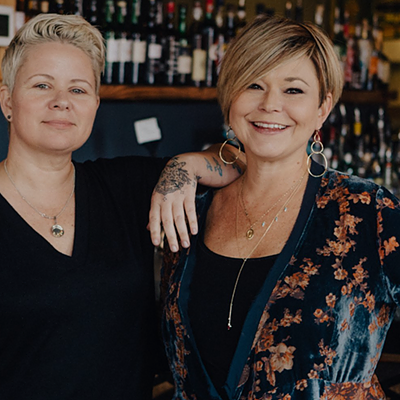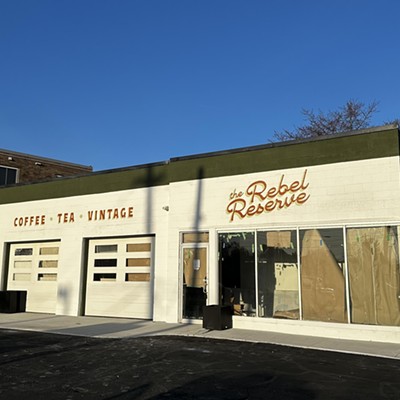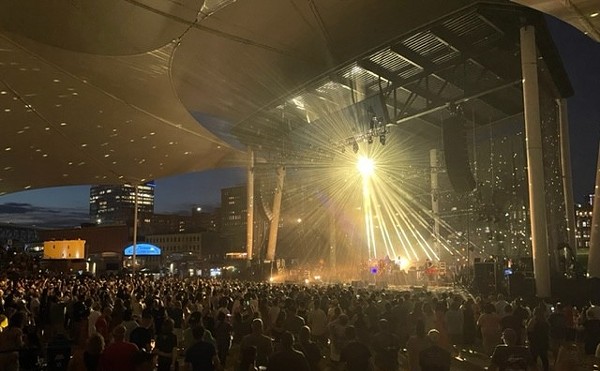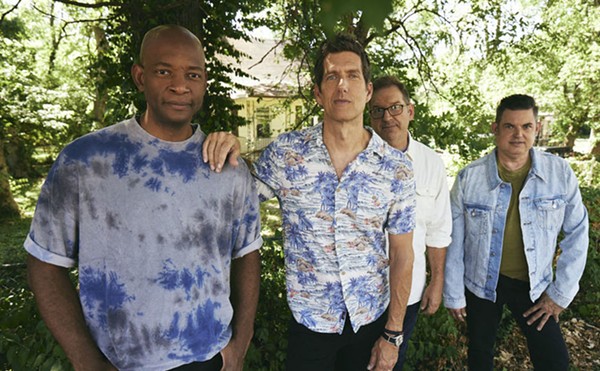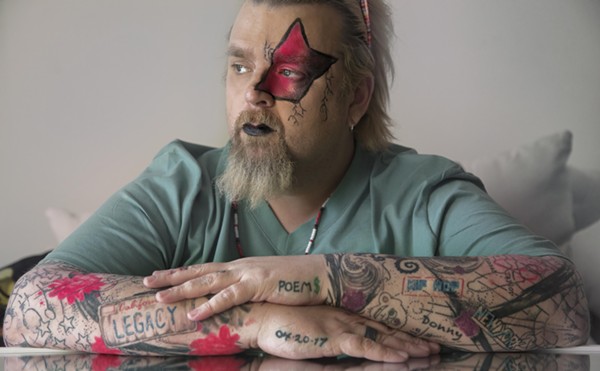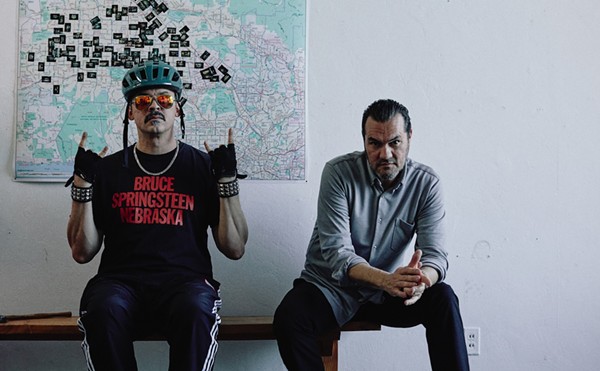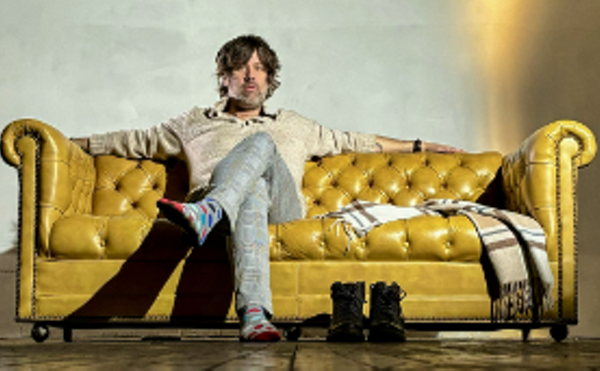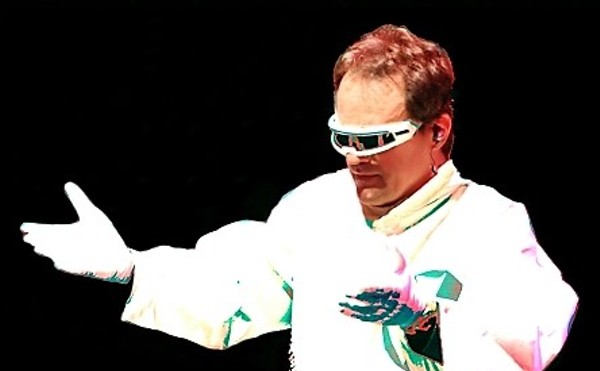"There was a club called the Dirty Dozen Social and Pleasure Club," Lewis recalls. "This particular club used to entertain the neighborhoods. They would go into the neighborhoods, different wards and whatnot, and they would dress up in funny costumes, beat on pots and pans and bass drums. So what happened was, they started hiring musicians to play their functions."
Lewis and company had already been rehearsing together and decided to take the job. Though the band has never really kept a dozen members, before long it found itself stuck with the numerically incorrect name. "People started calling us the Dirty Dozen Brass Band. We wanted to change the name, but by then it was too late, so we just kept it," Lewis says.
From the beginning, the true sound of the city helped define the Dirty Dozen. The spiritual side of the music was every bit as important as the instrumentation. "New Orleans is a spiritual city," says Lewis. "We got two churches on the block and a barroom on the corner. The church plays a big part in New Orleans music, because a lot of musicians learn to play music in the church. New Orleans music is basically a lot of hymns that we play during parades. We just changed the beat. Most kids go to Sunday school and choirs, and all that bleeds off into the music, and that's why it has such a mystical sound in it."
But the Dirty Dozen would never content themselves with a straight-up traditional New Orleans sound. The loose, mellow group of musicians all brought different influences, much of it well-removed from New Orleans of decades past. They decided they wouldn't adhere to orthodoxy, to go with whatever idea anyone in the group wanted to pursue. The brass band setup was the common denominator, but the music ranged all over the map. "When the band started out, we rehearsed all different kinds of music," says Lewis. "Everybody in the band is not in the same bag. Some guys brought some Michael Jackson tunes into the band. I'm in an old bag, so I brought in some bebop kind of stuff, and some of the other guys brought some of the other influences they had, 'cause we're all different ages, and we all have different musical experience."
Predictably, this melting pot resulted in an uneven succession of albums. But at their best, the Dirty Dozen's musicianship shines through, managing to pull off some of the oddest musical contortions. Built up from Lewis's keening baritone and former Dirty Kirk Joseph's amazingly fleet tuba bass lines (you almost have to hear them to believe them), the band can and has ripped through anything from traditional brass band music to '70s-style fusion, R&B, funk, rock, jazz, and blues — sometimes mixing and matching in the same tune. They've recorded an entire album of Jelly Roll Morton compositions, invited musicians like Dr. John and Branford Marsalis to play on all-star blowouts, and guested on Black Crowes records.
Joseph has departed and been replaced by Julius McKee, a tuba player of equal facility who also plays a mean upright and electric bass. "Julius McKee is probably one of the finest tuba players to come out of New Orleans," says Lewis. "He also got a degree in music. He knows what he's doing [and is] also a good writer and arranger, which is a big asset to the group."
This brings us up to the present with the Dirty Dozen and their latest recording, a hip outing titled Buck Jump. "Buck jump is a dance that goes with the traditional music of New Orleans that the natives do," Lewis explains. "We decided to name the album Buck Jump because it has a buck jump kind of tune — it's called "Old School' — where people would probably be doing that dance that they do. This album's a little more street-oriented. It has some contemporary things, some Latin influences, and even some blues influences that I think reach out to a lot of different audiences."
As with any Dirty Dozen recording, there are weak spots. The cover of Louis Jordan's "Run Joe" brings little to the tune that the indefatigable Jordan didn't already manage, and occasionally the band stretches thin material a little thinner. But Buck Jump is disproportionately weighted toward the visceral, the jazzy, the funky, the right-on brass band explosions. The band is in fine form — just about every brass and reed carrying musician gets in more than his fair share of gritty solos.
The relevant new variable here is the presence of producer/organist John Medeski of Medeski, Martin & Wood. His production did result in some tricky spots, like the murky sound in the lower registers on a few tunes. But Medeski's contributions were, on the whole, positive. In his first act as official knob turner, Medeski convinced the band to record mostly in first takes — giving the band an appealingly ramshackle, raw sound — and later managed to complement the sound with the subtle production touches that characterize Medeski, Martin & Wood's music. On the '70s funk-out "Duff," Medeski hangs a little reverb on a blistering trumpet solo; on the album's opener, "Unclean Waters," Medeski broadens the sound with his own organ fills. The record manages to sound blistering and wild, but at the same time subtle and controlled; spontaneous, but well-conceived.
Lewis considers jazz "the most sophisticated music on the planet Earth— [though] less played and less paid." But the addition of Medeski for Buck Jump only underlines the fact that the Dirty Dozen inhabit a space somewhat apart from jazz proper, in the same gray space as Medeski, Martin & Wood. Like MM&W, the Dirty Dozen use a jazz vocabulary and will frequently throw in some heady jazz interjections, but much of their music is derived equally from dance. MM&W have their Sun Ra, their Meters, and their James Brown; the Dirty Dozen have their '70s Miles Davis, their Jelly Roll Morton, and their Marvin Gaye (whose "Inner City Blues [Make Me Wanna Holler]" is covered on Buck Jump). Jazz may not get the play, but the Dirty Dozen can get a crowd on its feet and dancing, and that's why they can tour successfully with rock acts like the Black Crowes or, most recently, with Widespread Panic. The inspired pairing of Medeski with the Dirty Dozen only helped to hone the latter's sound, add an extra degree of jazz and funk, and a bit of edge and sophistication.
So what did the Dozen think of him? "Medeski? He's a pretty open-minded guy," Lewis says. "Easy to get along with; just like family. A cool dude. A good musician. He can play."
What about the production, Roger?
"Yeah, he's . . . Yeah, uh, I thought that was very creative. We just let the guy just go for it. We didn't do much fine-tuning for this. A lot of tunes were one take, and I think the tune "Old School' was created at the spur of the moment. On my tune, "Pet the Kat,' how he did the delay, I thought that was very creative. I'm not really a flute player. Flute is just something I fool around with. But on that cut, he made me sound like a real flute player. Ha! When I heard it, I couldn't believe it."


